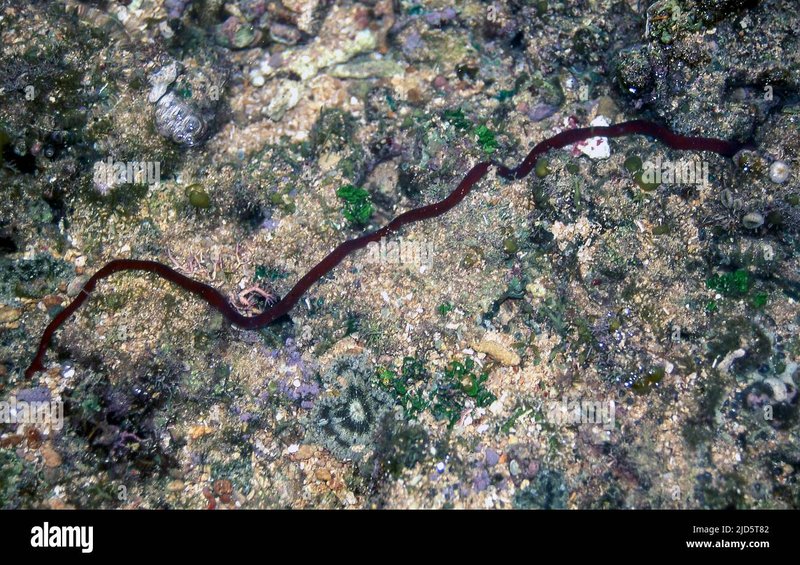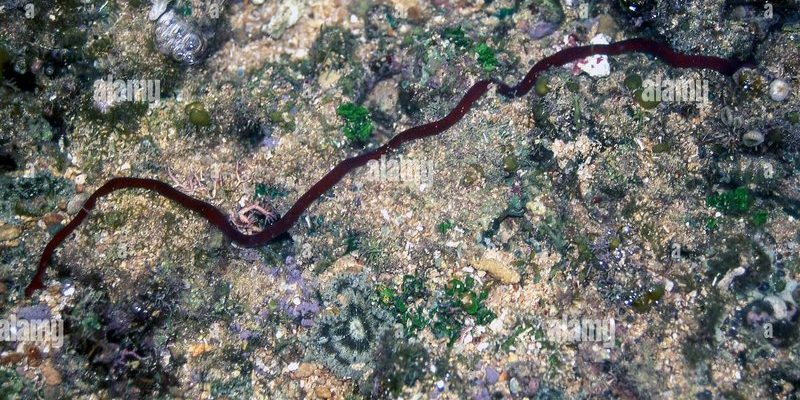
Imagine a bustling underwater city, where every organism, no matter how small, contributes to the overall balance. Ribbon worms are like the unsung heroes in this ecosystem. They might not have the flashy colors of a clownfish or the size of a sea turtle, but their importance is undeniable. Let’s dive deeper into the world of ribbon worms and discover their incredible contributions to coral reefs.
What Are Ribbon Worms?
Ribbon worms, scientifically known as Nemertea, are intriguing marine organisms that can be found in various aquatic environments, from tidal pools to the depths of the ocean. They’re called ribbon worms because of their long, flat bodies, which can stretch up to several feet long. Imagine a spaghetti noodle, but one that’s alive and wriggling! These worms vary in color and can be found in shades of brown, green, yellow, and even red.
One defining feature of ribbon worms is their proboscis—a retractable, tube-like structure used for hunting and defense. When threatened or hunting for prey, a ribbon worm can quickly extend its proboscis to capture unsuspecting prey. This unique adaptation is quite similar to how a chameleon uses its tongue to snag insects. Honestly, the way they catch their food is nothing short of amazing!
Ribbon worms are not just fascinating creatures; they also contribute to the intricate web of life in coral reefs. They often live in the sediment or among the coral, where they help break down organic matter and recycle nutrients. This process is crucial for maintaining the health of the reef and supporting other marine life.
The Role of Ribbon Worms in Coral Reefs
You might be wondering how these slender creatures impact coral reefs. The truth is, their role is multi-faceted. Ribbon worms help in nutrient cycling, which is essential for the survival of coral reefs. By breaking down organic material and releasing nutrients back into the water, they ensure that corals have access to what they need to grow and thrive.
Moreover, ribbon worms serve as a food source for various predators, including fish and other marine animals. This means they help sustain the food chain, allowing larger species to flourish. If you picture a bustling farmer’s market, ribbon worms are like the farmers bringing fresh produce to the stalls—without them, the market would struggle.
In addition to their contributions as decomposers and prey, ribbon worms can also affect the physical environment of coral reefs. By burrowing into the sediment and creating tunnels, they help aerate the substrate. This aeration improves water circulation, which is crucial for the health of corals and other organisms living in the reef.
Adaptations of Ribbon Worms
Adaptations are nature’s way of ensuring survival, and ribbon worms are no exception. They have developed a range of features that help them thrive in coral reef systems. Their ability to blend into their surroundings is one of the most impressive adaptations. The various colors and patterns of ribbon worms help them camouflage among the coral and sediment, making it harder for predators to spot them.
Besides their proboscis, another fascinating adaptation is their ability to regenerate. If a ribbon worm loses part of its body—whether from a predator attack or some other mishap—it can often regrow that lost section. This ability is akin to how certain species of starfish can regrow lost arms. This regeneration capability allows ribbon worms to adapt to their environment and avoid becoming easy prey.
Another intriguing aspect of ribbon worm biology is their reproductive strategy. Most ribbon worms are *hermaphroditic*, meaning they possess both male and female reproductive organs. This adaptation ensures that they can reproduce even when encountering other ribbon worms infrequently. It’s like having a backup plan, which is pretty smart if you ask me!
Threats to Ribbon Worms and Coral Reefs
Just like many creatures in the ocean, ribbon worms face a variety of threats that can impact their populations and, consequently, the health of coral reefs. Habitat destruction due to coral bleaching, climate change, and pollution are significant challenges. You might think of this as a ripple effect—when one aspect of the ecosystem is harmed, others feel the impact.
Coral reefs are particularly vulnerable to rising ocean temperatures and acidic waters. With corals stressed by these changes, the entire reef ecosystem weakens, affecting everything from the ribbon worms to the larger fish that rely on corals for shelter and food. This scenario is similar to a domino effect, where one fallen domino leads to the collapse of the entire line.
In addition to environmental threats, ribbon worms can also be affected by invasive species that disrupt local ecosystems. The introduction of non-native species can change the dynamics of predator-prey relationships, ultimately putting species like ribbon worms at risk. It’s a reminder that everything in nature is interconnected, and protecting one part of the ecosystem can shield the entire system.
The Importance of Conservation Efforts
With all these threats in mind, conservation efforts focused on coral reefs are more crucial than ever. Protecting ribbon worms, along with other marine life, requires a collective approach. Public awareness and education about the importance of coral reefs can inspire actions that help preserve these vital ecosystems.
Local communities can engage in beach cleanups to reduce pollution, and organizations often promote sustainable fishing practices to minimize the impact on marine life. It’s like being part of a team striving for a common goal—the health of our oceans!
Additionally, supporting marine protected areas can create safe havens for vulnerable species, including ribbon worms. These protected areas help to restore habitats and create a balance that allows for diverse life forms to thrive. Think of it as a sanctuary where marine life can recover and flourish.
Ribbon worms may not be the most glamorous creatures in the ocean, but their contributions to coral reef systems are invaluable. They play essential roles in nutrient cycling, serve as prey for larger marine animals, and help maintain the overall health of the reef.
As we continue to explore and understand these fascinating organisms, it’s vital to remember that every small creature has a role in the underwater ecosystem. By protecting coral reefs and the unique species that inhabit them, we can ensure a balanced and thriving marine world for generations to come. It’s up to us to appreciate the little things—like ribbon worms—that make a big difference!

